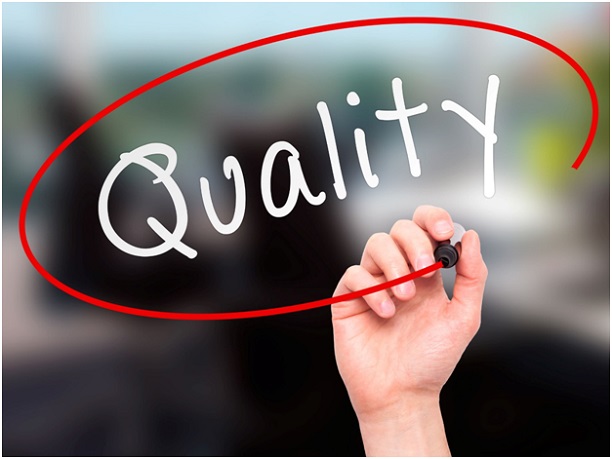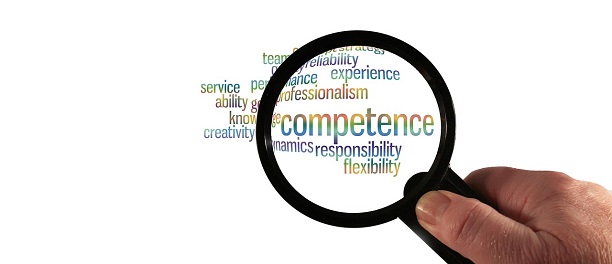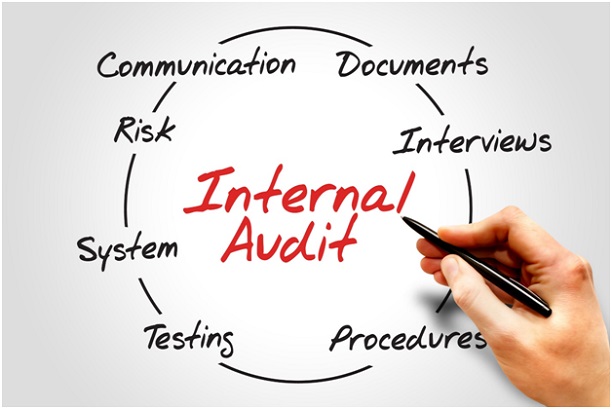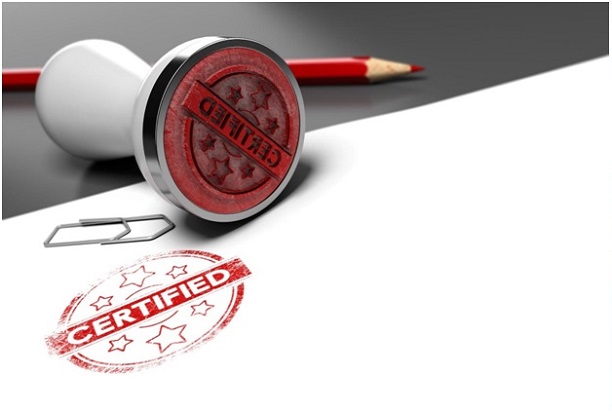Here is a detailed, 27-step ISO 9001 implementation guide.
Implementing ISO 9001 can appear daunting — that's why we've written this ISO 9001 implementation guide and produced a Project Plan with 18-Step Implementation Checklist.
We aim to give you a thorough understanding of the scope of the project and a detailed, actionable framework for the different stages of implementation.
You might be a small company or a large organization; but in all cases the stages of ISO 9001 implementation are identical. The process is the same.
Contents
- Top Management Buy-in & Financial Commitment
- Learn About ISO 9001
- Introductory Training
- Gap Analysis
- Strategy, Risks & Opportunities, Scope
- Quality Policy & Quality Objectives
- Documented Information Procedure
- Customer Satisfaction Procedure
- Nonconformity and Corrective Action Procedure
- Internal Audit Procedure
- Management Review 1
- Operational Procedures
- Purchasing and Procurement Procedure
- Competence and Awareness Procedure
- Implement the Supporting Processes
- Management Review 2
- Internal Auditor Training
- Start Internal Auditing
- Root-cause Analysis
- Corrective Actions Implementation
- Management Review 3
- Readiness Review
- Certification Body 1st Stage Audit
- Address 1st Stage Audit Findings
- Certification Body 2nd Stage Audit
- Address 2nd Stage Audit Findings
- Certification
- ISO Project Plans [Template downloads]
Our ISO 9001 Project Plan is proven to work.

Top management must ensure that the finances to support the QMS will be available.
The first critical step in the development and implementation of a QMS is the formal endorsement and commitment of Top management. The proposed development and implementation of the QMS should be formally documented and include the proposed implementation strategy, a broad time-line and an estimated budget.
The appointment of a professional Quality Manager or Management Representative is a key factor successful QMS implementation. It is strongly recommended that a full-time staff member be appointed at a senior level, and it is beneficial for the implementation process if they have knowledge of the business.
Purchase and read copies of ISO 9000:2015 and ISO 9001:2015 standard.
Read them both and make yourself familiar with their language and concepts. Although they are both written in a dense, formal language, the clause titles in ISO 9001:2015 are fairly self-explanatory.
Identify the processes that comprise your management system and determine which processes are responsible for meeting which requirements. Establish the QMS Implementation Team.
Learn about the Ten ISO 9001 clauses

Provide an overview of the ISO 9001:2015 requirements to key personnel, including those taking part in the QMS Implementation Team.
An introductory training session for all staff involved in the QMS should be organized, starting with the QMS Implementation Team including Top management. A basic introductory ISO training course helps to ensure the successful implementation of a QMS by providing sound understanding of the principles and practices pertaining to ISO 9001. Ideally, this course should be provided by a registered training organization with expertise in this area.
If a staff member has to conduct the training session, they must have a sound and demonstrated background in the subject matter combined with, wherever possible, formal training skills.
Involve employees in developing and improving the system, through awareness sessions, flowcharting, team reviews and experience feedback.
Our ISO 9001 Project Plan Template is proven to work.
Conduct a gap analysis of your current management system
Review all existing management system practices, controls and documentation using the requirements of ISO 9001:2015 as the criteria. Try to understand each business process in context of each of the requirements of the standards by comparing different activities and processes with what the standards requires.
A gap analysis is a technique to clearly identify which clauses of ISO 9001 are currently not being fully addressed (or not addressed at all) and to develop remedial actions. The gap analysis should be conducted by members of the QMS Implementation Team. Gap analyses should be conducted with small groups of staff, including the process owner of each process.
Establish the strategic direction of your company and implement the risks and opportunities procedure.
The organization has to establish its vision consistent with its mission and identify the strategic directions and interested party requirements consistent to its context. Identify the processes needed for the QMS.
The scope must set out what your company does and what it delivers. It should include products and services. It must be done with consideration to the context. Ensure staff understand the risks and opportunities that affect their work.
Our ISO 9001 Project Plan Template is proven to work.

Establish and communicate the quality policy, objectives and performance indicators.
Review the quality policy to determine whether it is appropriate to the context of the organization and its purpose. Ensure the quality objectives are consistent with the quality policy. Set objectives per function and identify measurable performance indicators to enable tracking of their status. Staff must know the quality policy and how the objectives relate to their work.
Implement the documented information procedure and train staff in its use.
Adjusting the QMS documents should also be expected as staff become accustomed to the requirements and begin to suggest improvements in usability.
Meet and discuss the requirements of ISO 9001 clause 7.5 and the quality management system and consider:

Implement the customer satisfaction procedure.
Meet and discuss the requirements of ISO 9001 clause 9.1.2 and the quality management system and consider:
Our ISO 9001 Project Plan Template is proven to work.
Implement the nonconformity and corrective action procedure.
Meet and discuss the requirements of ISO 9001 clause 8.7 and 10.2 and the quality management system and consider:

Implement the internal audit procedure.
Meet and discuss the requirements of ISO 9001 clause 9.2 and the quality management system and consider:
Our ISO 9001 Project Plan Template is proven to work.
Undertake the first Management Review and select a Certification Body.
Top Management to perform a review of progress and to identify areas of weakness and take corrective action as required. Certification Body selection criteria may include:
Information on selecting a certification body is available:
http://www.iso.org/iso/home/standards/certification.htm

Implement or document your operational procedures.
Meet and discuss the process requirements of ISO 9001 clause 8.0 and the quality management system and consider scheduling sessions with the authors of the operating procedures and other supporting documents to provide assistance in developing documents that are consistent with the set quality objectives and to the relevant requirements of ISO 9001 standard. If your operational procedures are effective and define how your key processes operate, keep them!
Implement the purchasing and procurement procedure.
Meet and discuss the process requirements of ISO 9001 clause 8.4 and the quality management system and consider:

Implement the competence and awareness procedure.
Meet and discuss the process requirements of ISO 9001 clauses 7.2 and 7.3 and the quality management system and consider:
Our ISO 9001 Project Plan Template is proven to work.
Meet and discuss the process requirements of ISO 9001 clause 7.1 and the quality management system and consider:

Amend the quality manual template and undertake the second Management Review.
Members of Top Management should assist the Management Representative in drafting the quality management system manual and preparing its scope.
If your existing quality manual fits your business and your customers require it, keep it! Top management to perform a review of progress and to identify areas of weakness and take corrective action as required.
Select external training providers and begin internal auditor training.
Discuss the requirements for internal auditing and teach the participants on how to audit a QMS. Based on education and experience auditors must pass 1-or 2-day external auditor course and exam.

Begin internal auditing (See ISO 9001:2015 Clause 9.2)
Perform an elemental internal audit of selected functions and areas using the audit programme and audit checklists. Ensure that the auditors do not audit their own functions or processes. All staff should be provided with adequate lead time to prepare for the audit.
Root-cause analysis workshop (See ISO 9001:2015 Clause 9.1.3)
Assist the process owners in determining root-causes and finding solutions through workshops and training on 5-Whys analysis, Fishbone Diagrams, or 8 Dimensions (8D) analysis techniques.

Implement the corrective actions based on the internal audit findings.
The process owners should implement the corrective actions to address the audit findings. The documented corrective actions must be submitted to the Management Representative for approval.
Our ISO 9001 Project Plan Template is proven to work.
Undertake the Third Management Review.
Top management to perform a review of progress and to identify areas of weakness and take corrective action as required.
Conduct a readiness review.
Once you have implemented the new key requirements and have dealt with any corrective actions, it is suggested that the Management Representative should carry out at least one other internal (element) audit in readiness for the Certification Body’s 1st stage audit.
Top Management should ensure that corrective action is undertaken on any adverse 1st stage audit findings without delay. Make any necessary changes to the quality management system and the documentation information.

The organization should liaise with the certification body to establish dates for the audit that suit all concerned. All staff should be provided with adequate lead time to prepare for the audit. All documentation that may be needed during the 1st stage audit should be easily accessible.
Top management should ensure that corrective action is undertaken on any adverse 1st stage audit findings without delay. Make any necessary changes to the quality management system and the documentation information.
The Management Representative should address the issues raised by the Certification Body to ensure a successful 2nd stage audit.
Certification Audit by the Registrar. At this stage, you should receive a Recommendation for Certification to ISO 9001:2015.
All documentation that may be needed during the 2nd stage audit should be easily accessible.
Top management should ensure that corrective action is undertaken on any adverse 2nd stage audit findings without delay. Make any necessary changes to the quality management system and the documentation information.
The documented corrective actions must be submitted to the Certification Body for approval.

Certification Body to verify and close-out 2nd stage audit findings
The documented corrective actions are verified by the Certification Body for final approval for certification to ISO 9001:2015.
It is imperative that the achievement of certification of compliance to ISO 9001:2015 is appropriately recognized by Top Management and celebrated by all staff.
Certification of compliance provides an excellent baseline on which to measure ongoing improvement of the organization.
ISO 9001 Implementation
Updated: 4th Feb 2024
Author: Richard Keen

Richard is our Compliance Director, responsible for content & product development.
But most importantly he is ISO's biggest fanboy and a true evangelist of the standards.
Learn more about Richard
Don’t Try to Manage It All Alone!
Our ISO Auditors and Quality Manager Trainers have been in this industry for years, and since 2002 we’ve been providing thousands of small businesses and large corporations with the tools they need to get certified.
Instead of trying to create a project plan and checklist from scratch, use ours.
Before you invest all the hours reinventing the wheel, before you spend countless dollars outsourcing the task — try our templates.
| QMS ISO 9001 |
EMS ISO 14001 |
OH&S ISO 45001 |
|||
ISO 9001 Project Plan and Implementation Checklists |
A complete 18-step project plan for ISO 9001 using MS Excel.
Implementation checklists for each of the 18 steps, MS Word.
|
|
$39 USD |
||
ISO 14001 Project Plan and Implementation Checklists |
A complete 18-step project plan for ISO 14001 using MS Excel.
Implementation checklists for each of the 18 steps, MS Word.
|
|
|
$39 USD |
|
ISO 45001 Project Plan and Implementation Checklists |
A complete 18-step project plan for ISO 45001 using MS Excel.
Implementation checklists for each of the 18 steps, MS Word.
|
|
|
$39 USD |
|
ISO 9001 + ISO 14001 |
A complete 18-step project plan for ISO 9001 and ISO 14001.
Implementation checklists for each of the 18 steps, MS Word.
|
|
$39 USD |
||
ISO 9001 + ISO 45001 |
A complete 18-step project plan for ISO 9001 and ISO 45001 using MS Excel.
Implementation checklists for each of the 18 steps, MS Word.
|
|
$39 USD |
$39 USD |
|
ISO 9001 + ISO 14001 + |ISO 45001 |
An integrated 18-step project plan for
Implementation checklists for each of the 18 steps, MS Word.
|
|
$39 USD |
||
Pay by Credit Card, Debit Card, PayPal or Apple Pay.


|
Please read our Money Back Guarantee. |
Bought by Small Businesses and Large Corporations our templates have been sold online and CD since 2002.
Used by:
The Templates are used by first-timers following our step-by-step, clause-by-clause guidance documents; and experienced Quality Managers wishing to streamline and improve their existing documentation.
The application of our templates is scalable and generic; regardless of the size and type of organization. The elements that form the quality management system are the same.
1. Our customizable templates save you time and money by offering a streamlined process to create your quality documentation
2. They’ve got everything you need in one simple template
3. Proven to work our templates have helped thousands of businesses big and small achieve certification
4. Documents use styles to make reformatting and rebranding a breeze
5. Our templates are generalizable for any industry or sector. The application of our templates is scalable and generic; regardless of the size and type of organization.